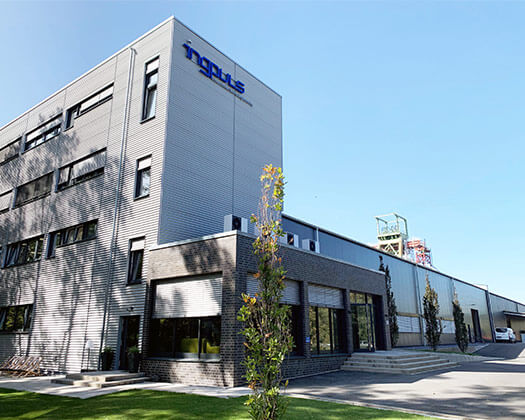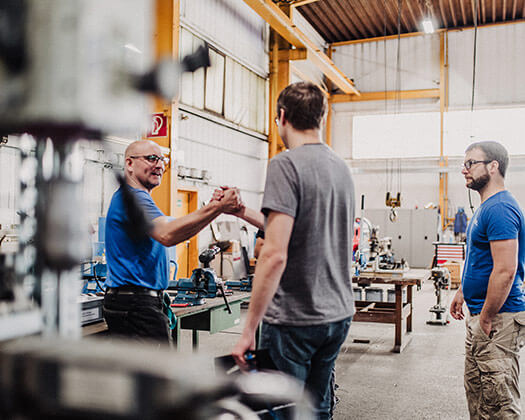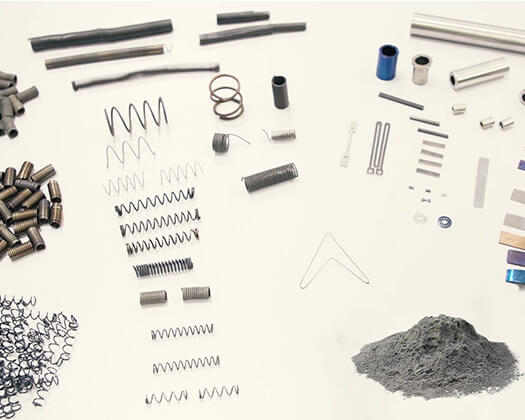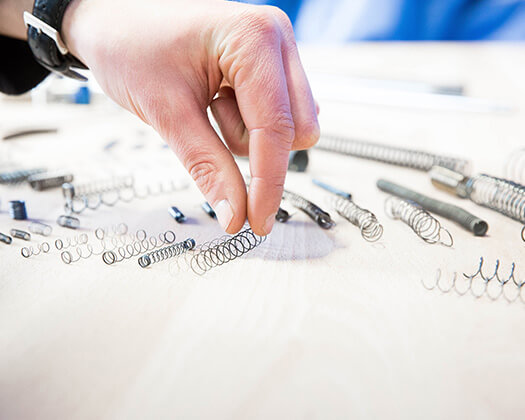Shape memory alloys (SMA) are metallic materials that can “remember” their original shape by being heated above a critical temperature after an apparently plastic deformation. In English, shape memory alloys (FMA) are called shape memory alloys (SMA for short); in German, the names memory metal or shape memory metal and, rarely, shape memory metal alloy are also used. Shape memory alloys (SMA) based on nickel and titanium (NiTi, Nitinol) offer the best properties for most applications, compared to other SMA. For this reason, SMA based on other elements are rarely used.
How are shape memory alloys characterized?
The ambient or operating temperature plays an essential role in the shape memory effect. This is because, depending on how it behaves in comparison with the properties of the alloy of the SM element, two different effects are mainly observed:
These effects are on the one hand the extrinsic two-way effect and on the other hand the so-called superelasticity. From a physical point of view, both effects involve a phase transformation within the material. This is reversible and characterized by diffusionless shearing of the crystal lattice.
The transformation takes place between a low temperature phase and a high temperature phase. The low-temperature phase is called martensite, the high-temperature phase austenite.
Applications of shape memory alloys (SMA)
Due to their ability to perform work in response to heating (e.g. electrically generated), shape memory alloys (SMA) are suitable for actuator applications. In addition, the use of shape memory alloys (SMA) has also proved successful for components that have to exhibit a large reversible deformation. This applies, for example, to dental files or guide wires for catheters in medical technology. Shape memory alloys (SMA) are suitable for many different industries due to their flexible and individual adaptation. In addition to the medical technology already mentioned, these include aerospace, automotive, household appliances, building technology and consumer electronics, as well as industry in general.
What are the properties of shape memory alloys?
Alloys based on shape memory technology are metallic materials that can remember their original shape after an apparently plastic deformation. Widely used are also the terms memory metal, shape memory metal or even shape memory metal alloy. However, these are strictly speaking, not correct, as shape memory materials are alloys and not pure metals. Due to their functional properties, shape memory alloys are ideally suited for applications in actuator technology, but also for components which must exhibit large reversible deformation (e.g. guide wires or catheters in medical technology). Here, reversible strains between 6-8% can be achieved.
Shape memory alloys (SMA) are based on the alloying elements nickel (Ni) and titanium (Ti). These are referred to as binary NiTi SMAs. The term binary comes from the fact that the alloy is composed of these two (binary = two) constituents. The following material parameters refer to this binary SMA.
Pseudoplastic SMA: Pseudoplastic (thermally activatable) SMA achieve strengths of more than 1200 MPa [N/mm²] and elongations at break of more than 10% in tensile tests.
Pseudoelastic SMA: The material parameters of SMA exceed those of the normal tensile test. In the room temperature tensile test, pseudoelastic SMA exhibit mechanical hysteresis. An upper plateau stress can be recognized. This is above 380 MPa [N/mm²]. For SMA, the transformation temperatures are crucial. These are the temperatures at which a phase transformation between martensite and austenite begins or ends.
The Technology behind Shape Memory Alloys (SMA)
At this point we should take a look at the technology behind the shape memory alloy; What exactly is behind it? The cause of this behavior is a solid-state phase transformation in the metal between two crystal structures, namely martensite (low-temperature phase) and austenite (high-temperature phase). Depending on the alloy composition, ambient temperature and stress condition, different effects can occur, which can be intelligently used for technical systems in different ways. For example, SMA springs can automatically open or close valves when the temperature of the ambient medium (air, water, oil) exceeds a certain value, the austenite start temperature. Tension wires can realize moderate travel at very large actuating forces. Under certain circumstances (wire diameter < 1.2-1.4mm), they are suitable for heating directly via the ohmic resistance of the wire using special control electronics.
What are the mechanical & physical properties of SMA?
Shape memory alloys based on NiTi are characterized by extremely large reversible formability (100x greater than steel), excellent structural and functional properties, high corrosion resistance and good biocompatibility. Another special feature is the high damping capacity of pseudoplastic alloys. These exhibit similar mechanical behavior to materials in the human body.
If your SMA component consists of two alloying elements, we call it a binary SMA. In tensile tests of binary Ni-Ti SMA made of nickel and titanium, strengths of more than 1200 MPa [N/mm²] and elongations at break of more than 10% are achieved (pseudoplastic variant). Pseudoelastic SMA, on the other hand, exhibit mechanical hysteresis. An upper plateau stress is formed which is above 380 MPa [N/mm²].






